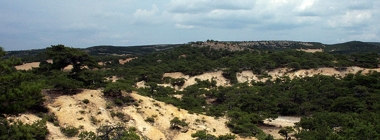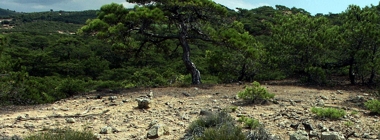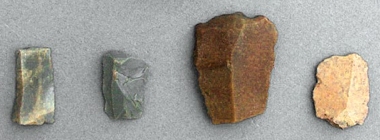
Fig. 4: Active gullies cut through beds of tuffite.

Fig. 5: Erosion disturbs and can completely destroy archaeological sites, but it can also expose sites buried long ago, and even create new
sites in various ways. Eroding areas are therefore archaeologically interesting.
Here deflation removes fine grain materials from the surface, leaving in place the coarser fraction and thus
creating dense concentrations of stones of all sizes - including pieces of flaked silex.

Fig. 6: These pieces along with another 44 were collected from 50 sq. meters (sample 0418) in the deflation surface shown in Fig. 5.